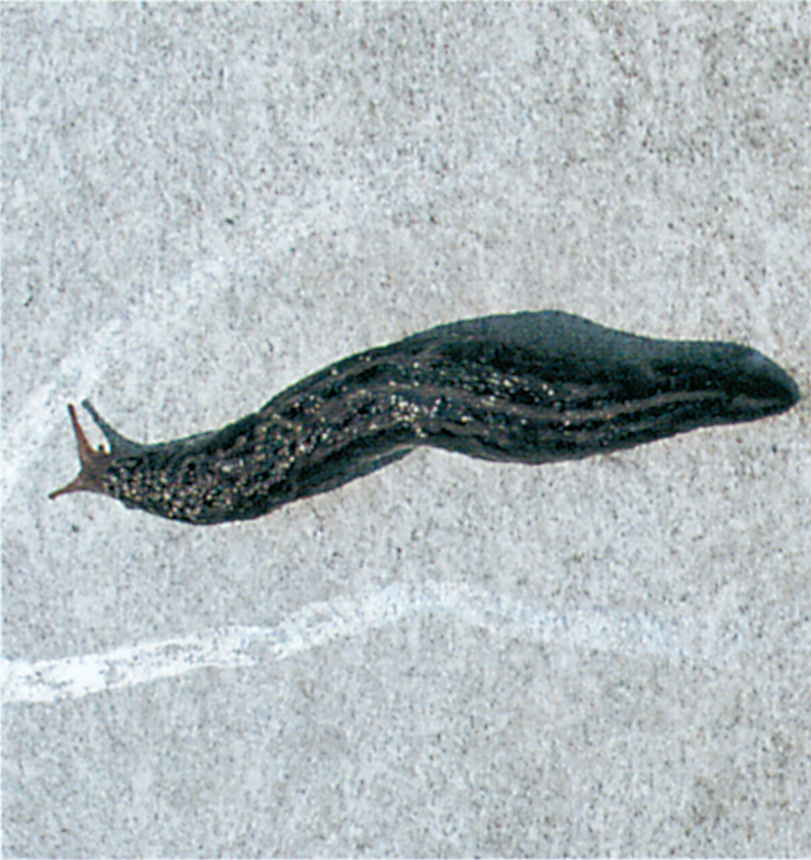These are molluscs which have lungs but no shell.
The yellow slug, Limax flavus, reaches a length of 7 -10 cm, and is pale greyish with darker spots and a reticulate pattern.

Another species, the great slug, L. maximus, which sometimes enters houses, reaches a length of up to 15 cm. It is also greyish but often with a more reddish tinge, and the front part of the body is marbled, the rear part having dark stripes.
These slugs are found particularly in cellars and outhouses. During the day they normally remain hidden in damp places, but start to come out as the light fails. They are almost omnivorous, feeding both on plants and on dead animal remains.

The eggs, which are very large, are laid during the summer in clumps under stones or logs where they are protected, and where it is damp.
Slugs themselves are quite harmless (but see p. 103), but they are annoying as they leave behind them a shiny trail of slime. This is normally a sign that it is rather damp, either in the room where the trail is seen, or in adjacent areas, such as the cellar or under the floor.

Slugs can also gain access to the house if the drains or outflows are faulty. Old lengths of piping which are no longer in use and which have not been removed or sealed off, will often provide good shelter for slugs.




